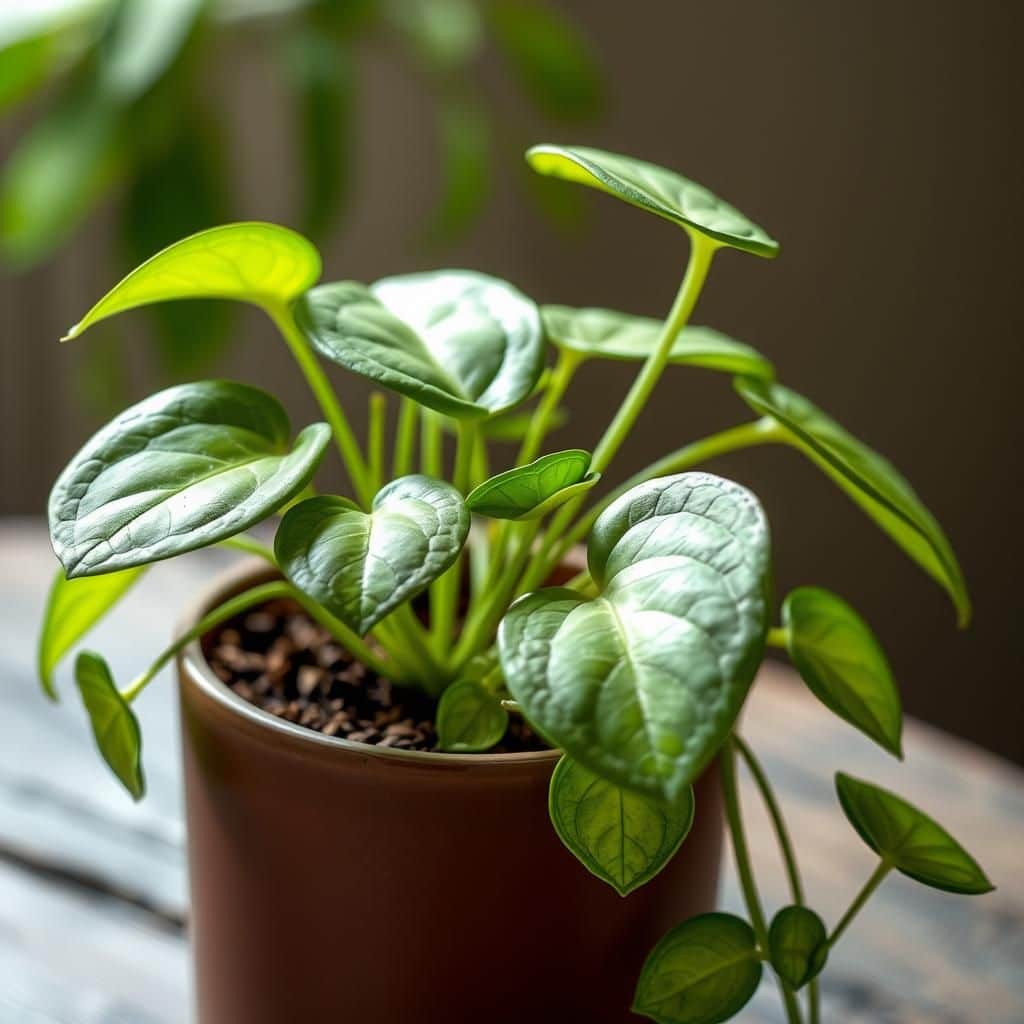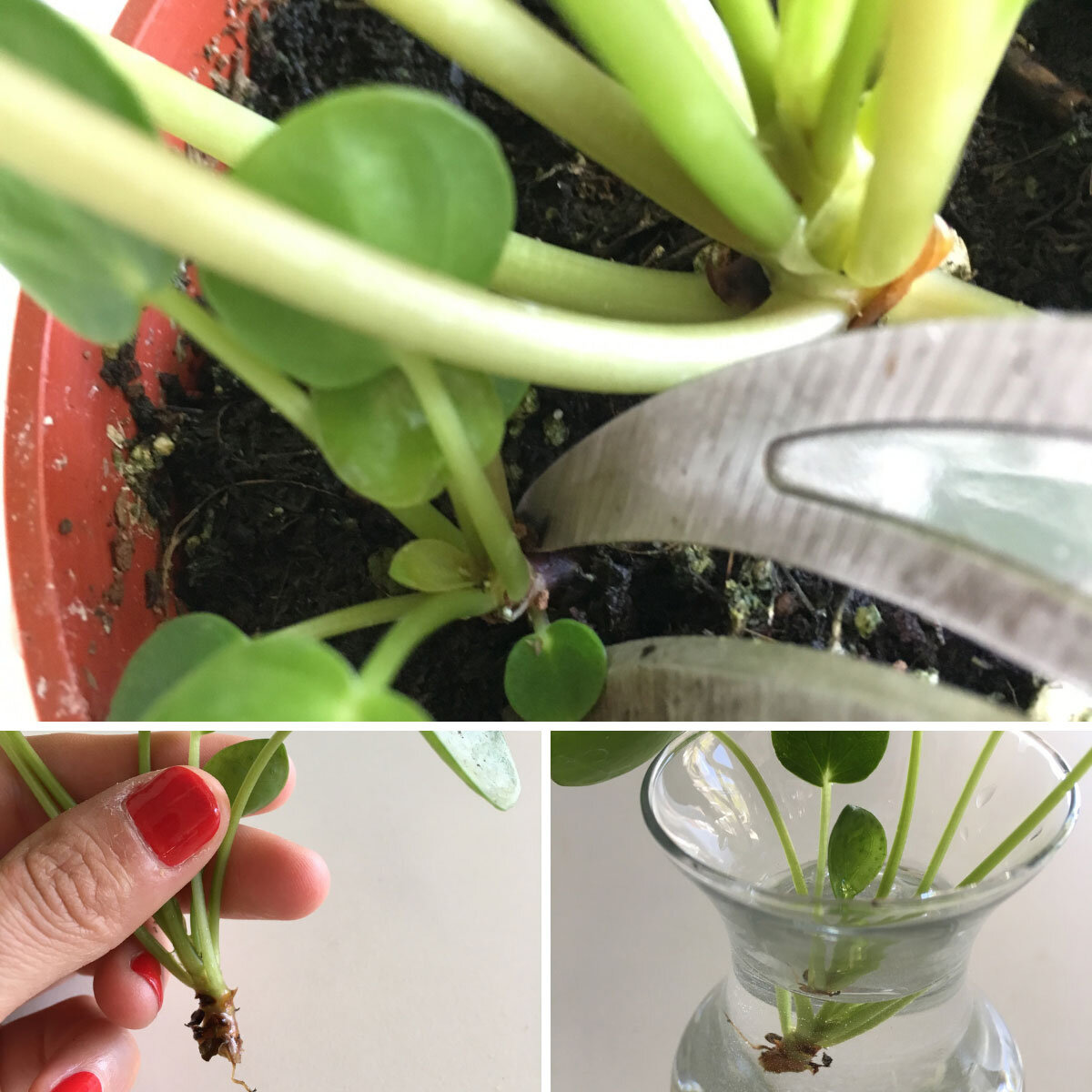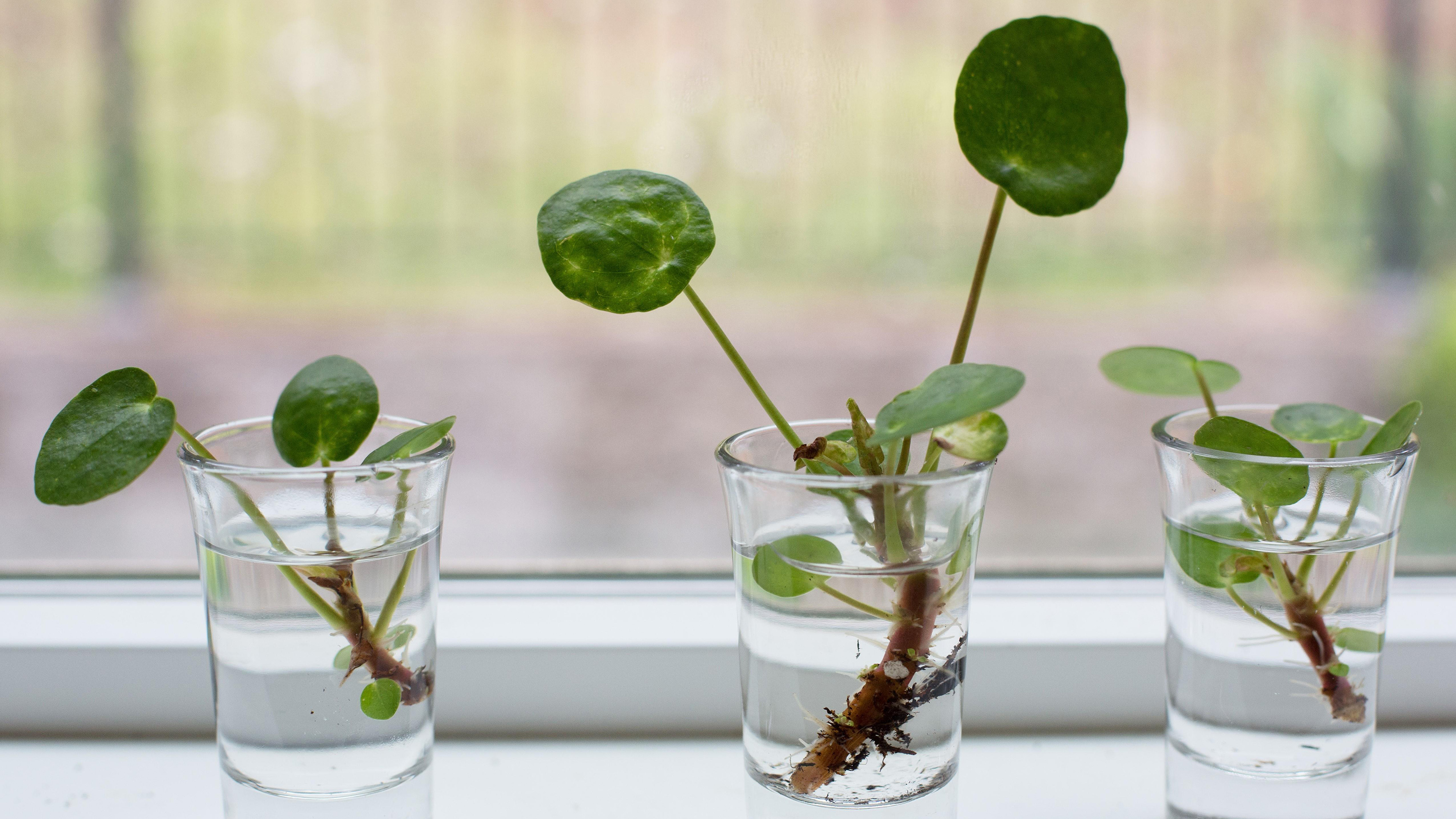Ultimate Guide to Chinese Money Plant Propagation: Tips and Techniques for Success

The Chinese money plant, also known as Pilea peperomioides, is adored for its unique round leaves and easy-going nature, making it a popular choice among houseplant enthusiasts. Propagating this charming plant can be a rewarding endeavor, allowing you to expand your indoor garden or share the joy with friends. In this ultimate guide, we will explore effective tips and techniques for successful propagation, ensuring that your Pilea thrives in its new environment. Whether you're a beginner or an experienced gardener, these insights will help you nurture healthy new plants from cuttings, enabling you to enjoy their beauty in abundance.
How to Propagate a Chinese Money Plant
To successfully propagate a Chinese Money Plant (Pilea peperomioides), start by selecting a healthy mother plant that has numerous offsets, or pups, growing at its base. Gently remove the pups from the mother plant by using a clean pair of scissors or a knife, ensuring that each pup has a few roots attached. Allow the cut ends to dry for a few hours to help prevent rot, and then plant them in a well-draining potting mix. Water lightly to encourage root development and place them in a bright, indirect light spot. With proper care, the pups will establish roots within a few weeks, resulting in thriving new plants.
Identifying Offsets for Propagation
When considering propagation, it’s essential to recognize the healthy offsets that can be separated from the main Chinese Money Plant. Look for offsets that have developed their own leaves and roots, typically found near the base of the plant. Healthy offsets should be a little bigger than the size of a coin and have a few tiny roots that are visible. Choosing healthy offsets maximizes the chances of successful propagation and ensures that the new plants grow robustly.
Best Soil for Chinese Money Plant Pups
Using the right type of soil is crucial for successful propagation of Chinese Money Plant pups. A well-draining potting mix, typically containing peat, perlite, and orchid bark, is ideal, as it prevents excess moisture that can lead to root rot. Adding some extra perlite can enhance drainage even further and ensure good airflow to the roots. This type of mix promotes healthy growth and helps the newly potted pups acclimate quickly to their new environment.
Watering Guidelines for New Plants
When watering newly propagated Chinese Money Plant pups, it's important to be cautious, as overwatering is a primary cause of plant stress. Initially, give them a light watering to moisten the soil without making it soggy. Allow the top inch of soil to dry out before watering again. As the pups begin to establish roots, gradually increase watering frequency based on the plant's needs, considering factors such as light exposure and temperature, to encourage healthy development.
Ideal Light Conditions
Light plays a vital role in the successful growth of Chinese Money Plant pups after propagation. These plants thrive in bright, indirect sunlight but can tolerate lower light conditions as well. It's essential to avoid exposing them to direct sunlight, as it can scorch their delicate leaves. Positioning the new plants near a window with filtered light or a distance of a couple of feet from a bright source will provide the right balance to promote healthy growth without causing damage.
Signs of Successful Propagation
After a few weeks, there are several signs to look for that indicate successful propagation of your Chinese Money Plant pups. One of the primary signs is the appearance of new growth; this could manifest as fresh leaves or stems budding from the base of the pup. Additionally, observing the roots through the drainage hole in the pot can indicate growth. Healthy pups will feel firm to the touch, with vibrant green leaves, showing that they are adapting well to their new environment.
| Sign | Description |
|---|---|
| New Growth | Fresh leaves or buds appearing from the base. |
| Firmness | The pups should feel firm, indicating health. |
| Visible Roots | Roots can sometimes be seen through the pot. |
| Leaf Color | Bright green leaves signify healthy growth. |
| Overall Vigor | Pups should look lively and not wilted. |
Can you grow a Chinese Money Plant from a cutting?

Yes, you can grow a Chinese Money Plant (Pilea peperomioides) from a cutting. These plants are quite popular due to their attractive round leaves and easy care requirements. Propagation through leaf cuttings can be successful, but there are specific steps you need to follow to increase your chances of success.
Understanding the Chinese Money Plant
The Chinese Money Plant is known for its unique appearance and symbolic meaning of prosperity and good fortune. This plant is native to the regions of southern China and has gained popularity worldwide. The plant's distinctive circular leaves grow on long, slender stems, which can be cut for propagation. Here are some key points about the plant:
- Ideal indoor plant for beginners due to its low maintenance.
- Thrives in bright, indirect light but can adapt to lower light conditions.
- Requires well-draining soil to prevent root rot.
How to Take a Cutting
Taking a cutting from your Chinese Money Plant involves a few essential steps to ensure successful propagation. You should select a healthy stem with at least one leaf attached. When making a cutting, it is vital to use sterilized tools to prevent infection. Follow these steps:
See also:
- Use sharp, clean scissors or pruning shears to cut a stem about 4-6 inches long.
- Make sure the cutting has at least one healthy leaf, as this will aid in the growth of roots.
- Allow the cutting to dry for a few hours before placing it in water or soil.
Rooting in Water vs. Soil
You can propagate your cutting either in water or directly in soil, each method having its advantages. Water propagation allows you to watch the roots develop, while soil propagation provides a more natural environment. Here are some factors to consider for each method:
- Water: Set the cutting in a jar of water, ensuring the leaf does not touch the water. Change the water weekly.
- Soil: Plant the cutting in a small pot with well-draining soil and keep it moist but not soggy.
- Both methods require patience as root development can take several weeks.
Care After Taking Cuttings
After taking your cuttings and placing them in either water or soil, they will need specific care to help them thrive. Proper conditions will help the cutting to take root successfully. Here are some care tips:
- Provide indirect sunlight to prevent the cutting from burning while it establishes.
- Keep the soil consistently moist but not waterlogged, or change the water often if rooting in water.
- Maintain a warm environment to encourage growth; around 70°F (21°C) is ideal.
Transplanting Your New Plant
Once the cutting has developed a robust root system, it will be time to transplant it into a larger pot or into your garden. Transplanting can be an important step in the life of a Chinese Money Plant. Consider the following when transplanting:
- Choose a pot that is a few inches larger than the last, ensuring it has drainage holes.
- Use a well-balanced potting mix designed for houseplants to provide the best nutrients.
- Gentle handling of the roots is crucial; avoid damaging them during transplantation.
Will Chinese Money Plant root in water?

Yes, the Chinese Money Plant (Pilea peperomioides) can root in water, making it a popular choice for propagation among plant enthusiasts. When propagated correctly, this plant can thrive and develop a robust root system in water before being transferred to soil. Water propagation allows you to easily observe root development and ensure that the cutting is healthy before making a permanent transition to soil.
How to Propagate Chinese Money Plant in Water
To propagate a Chinese Money Plant in water, follow these steps for the best results:
- Choose a healthy leaf or stem cutting, ideally with at least one node.
- Cut just below the node using clean, sharp scissors.
- Place the cutting in a clear container filled with water, ensuring the node is submerged while the leaves remain above.
Ideal Conditions for Rooting in Water
Successful rooting of the Chinese Money Plant in water requires specific conditions:
- Keep the container in a bright, indirect light location to promote growth without causing leaf burn.
- Change the water every week to prevent stagnation and the growth of bacteria.
- Ensure the temperature remains consistent and warm, ideally between 65°F and 75°F (18°C to 24°C).
Timeframe for Roots to Develop
The time it takes for a Chinese Money Plant to root in water can vary, but generally:
- Roots may start to develop within 1 to 2 weeks.
- After 4 to 6 weeks, you should see an extensive network of roots.
- Patience is crucial; some cuttings may take longer, depending on environmental conditions.
Signs of Healthy Root Development
Monitoring root development is essential to ensure the success of your propagation efforts. Look for these signs:
- White, healthy roots that appear firm and not mushy.
- Multiple roots growing from the node, indicating a robust root system.
- Increased growth of new leaves on the cutting as the roots develop.
Transferring Roots from Water to Soil
Once the Chinese Money Plant has established a good root system, it's time to move it to soil:
- Choose a well-draining potting mix suitable for houseplants.
- Gently remove the cutting from the water and rinse off any remnants of water.
- Plant it in a pot, ensuring the roots are spread out, and water lightly to help settle the soil around the roots.
Is it better to propagate a money tree in water or soil?


To determine whether it's better to propagate a money tree (Pachira aquatica) in water or soil, we should consider several factors such as growth rate, success rate, and maintenance needs. Both methods have their unique benefits, but they may perform differently depending on the environment and specific circumstances of the plant.
Propagation in Water
Propagating a money tree in water can provide visible results relatively quickly. This method allows for easy monitoring of root development, giving the gardener assurance that the propagation is successful. The process is straightforward:
- Cut a healthy stem with several leaves.
- Place the cutting in a glass of water, ensuring that at least one node is submerged.
- Change the water weekly to prevent stagnation and bacteria growth.
However, the roots that develop in water tend to be less robust than those grown in soil, which could lead to problems when transitioning the plant to a more permanent growing medium.
Propagation in Soil
Using soil for propagation generally results in more stable plants. Soil provides essential nutrients and a more natural environment for root development. Here's how to propagate in soil:
- Prepare a pot with well-draining soil, preferably a mixture designed for propagation.
- Insert the cutting into the soil at least one node deep, ensuring the leaves are above the soil surface.
- Water the soil lightly and cover the pot with a plastic bag to create humidity.
Soil propagation may take longer for roots to establish compared to water, but it often leads to stronger, healthier plants in the long run.
Factors to Consider
When deciding between water and soil for propagation, certain factors should be taken into account:
- Environment: The humidity and temperature of your location can significantly influence the success rate of both methods.
- Care: Water propagation often requires less immediate attention than soil, which may require more consistent humidity and moisture levels.
- Plant Health: Assessing the health of the cutting and the overall vigor of the parent plant is crucial for successful propagation.
Comparison of Growth Rates
Growth rates can vary significantly between water and soil propagation methods:
- Water Method: Roots can develop rapidly within a couple of weeks, but growth may stall once transferred to soil.
- Soil Method: Initial root development may be slower but often leads to a more vigorous and healthier plant as it adapts to its environment.
- Total Growth: Over time, plants propagated in soil may outgrow those started in water due to better nutrient access.
Success Rates
Understanding the success rates of each method can help in making an informed decision:
- Water Propagation: Offers a high visual cue for success, but plants may struggle adaptively after transitioning to soil.
- Soil Propagation: While it may have a slightly lower initial success rate, the long-term health outcome can be much better.
- Cutting Quality: The quality of the cutting used can greatly influence the success rate, regardless of the propagation medium.
Questions from Our Readers
How can I propagate a Chinese money plant?
To propagate a Chinese money plant, you can use the offsets that grow around the main plant. Carefully separate these small plants from the parent using a clean, sharp tool, and then place them in a pot with well-draining soil. Ensure the new plants receive indirect sunlight and keep the soil moist but not waterlogged for optimal growth.
What soil is best for propagating a Chinese money plant?
The best soil for propagating a Chinese money plant is a mix that provides good drainage and aeration. A common choice is a blend of potting soil, perlite, and cactus mix. This combination promotes healthy root development while preventing issues related to overwatering.
How long does it take for Chinese money plant cuttings to root?
Chinese money plant cuttings typically take about 2 to 4 weeks to start rooting, but this can vary based on environmental conditions such as temperature and humidity. Providing a warm and humid environment can help speed up the rooting process, so consider using a plastic bag or mini greenhouse to maintain humidity.
See also:
Can I propagate a Chinese money plant in water?
Yes, you can propagate a Chinese money plant in water by placing the offsets or cuttings in a glass or jar filled with clean water. Make sure to keep the leaves above the water line to prevent rotting, and change the water every few days for best results. Once roots develop, you can transfer the new plant to soil.

If you want to read more articles like Ultimate Guide to Chinese Money Plant Propagation: Tips and Techniques for Success, we recommend you check out our Planter category.
Leave a Reply
Related Articles